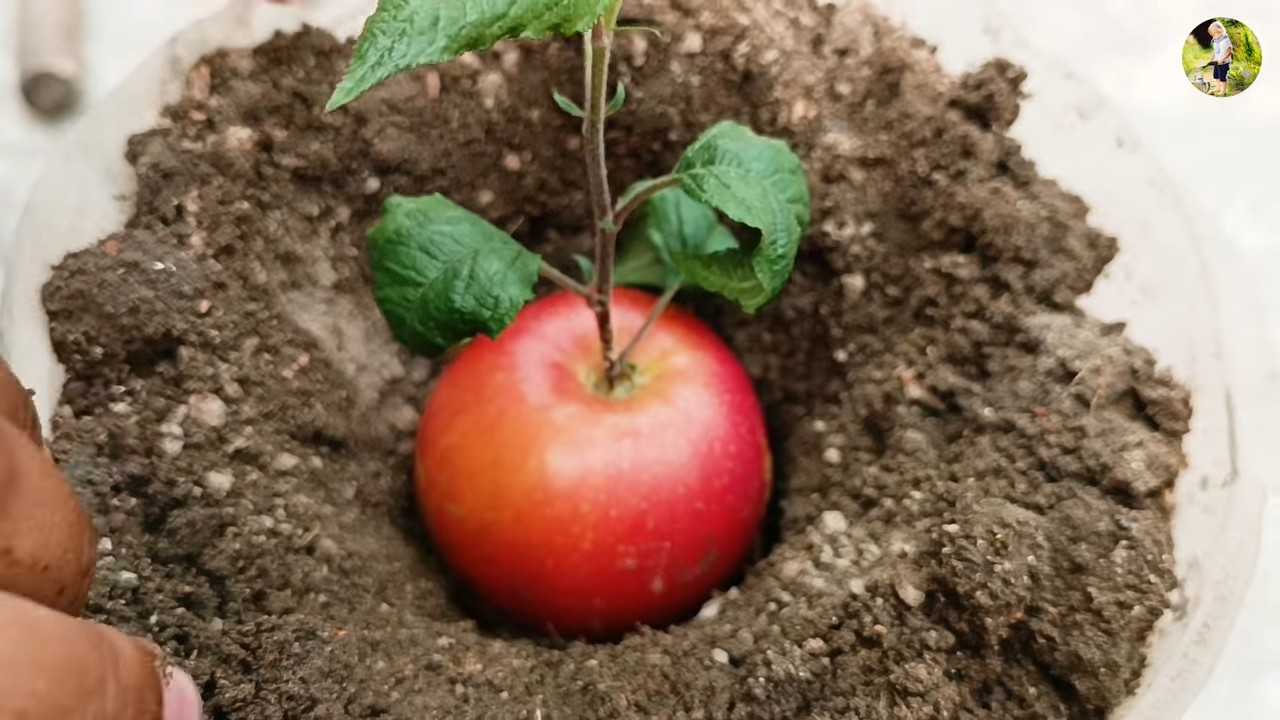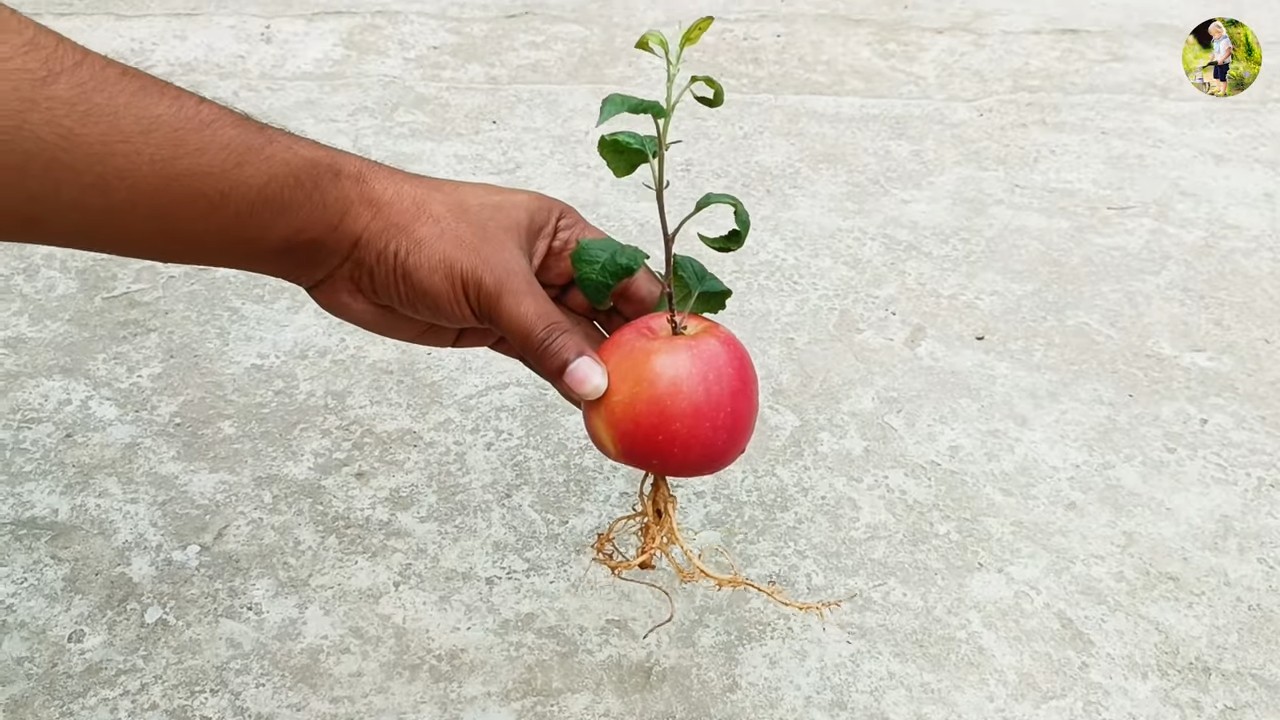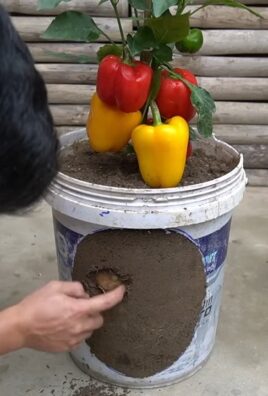Growing Apples Indoors might sound like something out of a fairytale, but trust me, it’s more achievable than you think! Forget those snow-white scenarios; we’re talking about bringing the crisp, juicy goodness of homegrown apples right into your living space. For centuries, fruit trees have been symbols of prosperity and abundance, gracing orchards and gardens worldwide. While traditionally cultivated outdoors, the desire to enjoy fresh produce year-round, regardless of climate or space constraints, has fueled the rise of indoor gardening.
But why would you even *want* to grow apples indoors? Well, imagine biting into a perfectly ripe apple you nurtured yourself, knowing exactly where it came from and what went into its growth. No pesticides, no long transportation distances – just pure, unadulterated apple bliss! Plus, let’s be honest, a miniature apple tree adds a touch of whimsical charm to any home. This DIY guide is your passport to mastering the art of growing apples indoors, offering simple yet effective tricks and hacks to transform your home into a miniature orchard. Whether you’re a seasoned gardener or a complete newbie, I’m here to guide you through every step, from choosing the right variety to ensuring a bountiful harvest. Get ready to roll up your sleeves and embark on this exciting green adventure!

Growing Apples Indoors: Your DIY Guide for an Indoor Apple Harvest
Hey everyone! Have you ever dreamed of growing your own apples at home? Sounds crazy, right? But it’s absolutely doable! I’ll show you how, with a little patience and the right tricks, you can grow your own indoor apple trees and hopefully soon harvest juicy apples. Let’s get started!
What you need: The Checklist for Your Indoor Apple Garden
Before we begin, here is a list of everything you’ll need for your indoor apple project:
- Apple tree seedling: Choose a self-pollinating dwarf variety. This is super important because regular apple trees grow huge and need a partner for pollination. Dwarf varieties stay small and are often self-pollinating. It’s best to ask at your local nursery!
- Large pot: At least 30-40 cm (12-16 inches) in diameter. Apples need space for their roots.
- High-quality potting soil: A mixture of potting soil, compost, and perlite is ideal. This ensures good drainage and nutrients.
- Grow light: Apples need a lot of light, especially in winter. An LED grow light is energy-efficient and provides the right spectrum.
- Fertilizer: A balanced liquid fertilizer for fruit trees.
- Spray bottle: For watering and increasing humidity.
- Garden shears: For pruning the tree.
- Paintbrush: For manual pollination (if necessary).
- Patience: Apples don’t grow overnight!
Step-by-Step Guide: Your Indoor Apple Tree Project
Now let’s get down to it! Here is a detailed guide on how to successfully grow your apple tree indoors:
1. Choosing the Right Apple Tree
- Dwarf variety is key: As mentioned, be sure to choose a dwarf variety. Popular indoor varieties include ‘Gala,’ ‘Fuji,’ or ‘Honeycrisp’ as dwarf versions.
- Self-pollinating is ideal: Make sure the variety is self-pollinating. This means it doesn’t need another variety for pollination.
- Healthy appearance: The seedling should have healthy leaves and no signs of diseases or pests.
2. Preparing the Pot
- The right pot: Choose a pot with sufficient drainage holes. Waterlogging is poison for apple trees.
- Drainage layer: Fill the bottom of the pot with a layer of expanded clay or gravel. This further improves drainage.
- The right soil: Mix high-quality potting soil with compost and perlite. This ensures good nutrient supply and drainage.
3. Planting the Apple Tree
- Carefully remove the seedling from the pot: Gently take the seedling out of its original pot. Be careful not to damage the roots.
- Loosen the roots: Lightly loosen the roots before planting the tree. This promotes establishment.
- Place the tree in the pot: Place the tree in the center of the pot and fill it with soil. The top of the root ball should be just below the soil surface.
- Water thoroughly: Water the tree thoroughly until water runs out of the drainage holes.
4. The Right Location and Lighting
- Bright location: Apple trees need a lot of light. Place the pot in a bright location, ideally near a south-facing window.
- Supplemental lighting: In winter or on cloudy days, a grow light is essential. Position the lamp so that it illuminates the tree from above. The lamp should be on for 12-16 hours a day.
- Don’t forget to rotate: Rotate the tree regularly so that all sides receive even light.
5. Watering and Fertilizing
- Water regularly: Water the tree regularly, but avoid waterlogging. The soil should always be slightly moist.
- The finger test: Do the finger test! Stick your finger about 2-3 cm (1 inch) deep into the soil. If it feels dry, it’s time to water.
- Fertilizing: During the growing season (spring and summer), fertilize the tree every two weeks with a balanced liquid fertilizer for fruit trees. Follow the instructions on the packaging. In winter, you should reduce or stop fertilizing altogether.
6. Pruning for a Bountiful Harvest
- Why prune? Pruning promotes growth and fruit production. It also keeps the tree in shape.
- When to prune? The best time to prune is in late winter or early spring, before the tree starts new growth.
- How to prune? Remove dead, diseased, or crossing branches. Shorten long shoots to encourage branching. Make sure you make clean cuts.
7. Pollination: Giving Nature a Helping Hand
- Self-pollinating, but…: Even if your variety is self-pollinating, manual pollination can improve the harvest.
- The paintbrush trick: When the tree is in bloom, take a small paintbrush and transfer pollen from one flower to another. Repeat this several times during the flowering period.
- Bee substitute: You can also place a small fan near the tree to distribute the pollen.
8. Keeping an Eye on Pests and Diseases
- Regular checks: Check the tree regularly for pests and diseases.
- Common pests: Aphids, spider mites, and mealybugs can appear on apple trees.
- Natural control: In case of an infestation, you can use natural pesticides like neem oil or insecticidal soap.
- Prevention is better: Ensure good ventilation and avoid waterlogging to prevent diseases.
Challenges and Solutions: What to do if something goes wrong?
Even if you do everything right, problems can occur. Here are a few common challenges and how you can solve them:
- Leaves falling off: This can have various causes, e.g., too little light, too much or too little water, or a nutrient deficiency. Check your care routine and adjust it accordingly.
- No flowers: This can be due to too little light, not enough fertilizer, or a tree that is too young. Ensure sufficient light and fertilize the tree regularly. Patience is also important!
- Fruit dropping: This can be due to inadequate pollination, too little water, or a nutrient deficiency. Pollinate the flowers manually and ensure sufficient watering and fertilization.
The Harvest: The Reward for Your Effort
- When to harvest? The apples are ripe when they have their typical color and can be easily detached from the tree.
- Pick carefully: Pick the apples carefully to avoid damaging them.
- Enjoy! And now: enjoy your homegrown apples!
Additional Tips for a Successful Indoor Apple Harvest
Increase humidity: Apple trees like high humidity. You can increase the humidity by placing a tray of water near…

Conclusion
So, there you have it! Growing apples indoors might seem like a whimsical dream, but with a little patience, dedication, and the right approach, you can absolutely cultivate your own miniature orchard right inside your home. This DIY trick isn’t just about having fresh apples at your fingertips; it’s about the joy of nurturing life, the satisfaction of watching something grow from seed (or sapling) to fruit, and the unique experience of connecting with nature in an unexpected way.
Why is this a must-try? Beyond the novelty, growing apples indoors offers several compelling advantages. You have complete control over the growing environment, shielding your precious trees from harsh weather, pests, and diseases that can plague outdoor orchards. This means you can potentially enjoy a longer growing season and a more consistent yield. Plus, imagine the conversation starter! “Oh, these apples? I grew them myself, right here in my living room.” It’s a guaranteed way to impress your friends and family.
But the real magic lies in the process. From carefully selecting your apple variety to meticulously tending to its needs, growing apples indoors is a deeply rewarding experience. It teaches you about botany, patience, and the delicate balance of nature. It’s a project that can be enjoyed by individuals, families, and even classrooms, fostering a love for gardening and a deeper appreciation for the food we eat.
Looking for variations? Consider experimenting with different apple varieties known for their compact size and suitability for container gardening. Dwarf or semi-dwarf varieties like ‘Gala’, ‘Fuji’, or ‘Honeycrisp’ are excellent choices. You can also explore different training techniques, such as espaliering, to maximize space and create a visually stunning display. Another fun variation is to try grafting different apple varieties onto a single rootstock, creating a “fruit salad tree” with multiple types of apples.
Don’t be afraid to get creative with your indoor orchard! Use decorative pots, add companion plants like herbs or flowers, and create a personalized growing space that reflects your style. The possibilities are endless.
We wholeheartedly encourage you to embark on this exciting DIY adventure. Growing apples indoors is a challenging but ultimately fulfilling endeavor that will bring beauty, flavor, and a sense of accomplishment to your home. And remember, the key to success lies in research, patience, and a willingness to learn from your mistakes.
Once you’ve harvested your first crop of homegrown apples, we’d love to hear about your experience! Share your photos, tips, and stories with us in the comments below. Let’s create a community of indoor apple growers and inspire others to embrace the joy of DIY gardening. So, grab your gardening gloves, choose your apple variety, and get ready to experience the magic of growing apples indoors! Let’s make **growing apples indoors** a common practice.
Frequently Asked Questions (FAQ)
1. What apple varieties are best for growing indoors?
Choosing the right apple variety is crucial for success when growing apples indoors. Look for dwarf or semi-dwarf varieties that are naturally smaller and more suited to container gardening. Some excellent choices include:
* **Gala:** A popular, sweet, and crisp apple that is relatively easy to grow.
* **Fuji:** Another sweet and crisp variety that is known for its long storage life.
* **Honeycrisp:** A highly sought-after apple with a distinctive sweet-tart flavor and crisp texture.
* **Golden Delicious:** A classic apple with a mild, sweet flavor and a tender texture.
* **Red Delicious:** While not as flavorful as some other varieties, Red Delicious is a reliable producer and can be a good option for beginners.
When selecting your apple variety, consider your taste preferences, the size of your growing space, and the availability of pollinators. Some apple varieties are self-pollinating, while others require cross-pollination from another apple tree.
2. How much sunlight do indoor apple trees need?
Sunlight is essential for apple tree growth and fruit production. Indoor apple trees need at least 6-8 hours of direct sunlight per day. If you don’t have a sunny window, you can supplement with grow lights. LED grow lights are a great option because they are energy-efficient and provide the full spectrum of light that plants need. Position the grow lights about 12-18 inches above the tree and adjust as needed to prevent leaf burn. Rotate your apple tree regularly to ensure that all sides receive adequate sunlight.
3. What type of soil and pot should I use?
Use a well-draining potting mix specifically formulated for fruit trees. Avoid using garden soil, as it can be too heavy and compact for container gardening. A good potting mix will contain a blend of peat moss, perlite, and vermiculite. Choose a pot that is at least 15-20 gallons in size to accommodate the tree’s root system. Make sure the pot has drainage holes to prevent waterlogging. You may need to repot your apple tree every few years as it grows.
4. How often should I water my indoor apple tree?
Water your apple tree regularly, but avoid overwatering. The frequency of watering will depend on the size of the pot, the type of soil, and the environmental conditions. Check the soil moisture regularly by sticking your finger into the soil. If the top inch of soil is dry, it’s time to water. Water deeply until water drains out of the drainage holes. Avoid letting the tree sit in standing water.
5. How do I pollinate my indoor apple tree?
Many apple varieties require cross-pollination to produce fruit. If you only have one apple tree, you will need to hand-pollinate it. Use a small paintbrush to transfer pollen from the flowers of one apple tree to the flowers of another. You can also purchase pollen from a nursery or online supplier. Alternatively, you can keep your tree outside during its bloom time to allow for natural pollination.
6. How do I fertilize my indoor apple tree?
Fertilize your apple tree regularly during the growing season (spring and summer). Use a balanced fertilizer specifically formulated for fruit trees. Follow the instructions on the fertilizer label for application rates. Avoid over-fertilizing, as this can damage the tree. You can also supplement with organic fertilizers like compost tea or fish emulsion.
7. How do I prune my indoor apple tree?
Pruning is essential for maintaining the shape and health of your apple tree. Prune your tree in late winter or early spring before new growth begins. Remove any dead, damaged, or diseased branches. Also, prune to improve air circulation and light penetration. You can also prune to shape the tree and encourage fruit production.
8. How do I protect my indoor apple tree from pests and diseases?
Inspect your apple tree regularly for signs of pests and diseases. Common pests include aphids, spider mites, and scale. Common diseases include apple scab and powdery mildew. Treat any infestations or infections promptly with appropriate insecticides or fungicides. You can also use organic pest control methods like neem oil or insecticidal soap.
9. How long does it take for an indoor apple tree to produce fruit?
It can take several years for an indoor apple tree to produce fruit. Grafted trees typically produce fruit sooner than trees grown from seed. Be patient and continue to care for your tree, and eventually, you will be rewarded with delicious homegrown apples.
10. Can I grow apples indoors year-round?
Yes, you can grow apples indoors year-round, but you will need to provide the tree with the proper conditions. This includes adequate sunlight, proper watering, fertilization, and pruning. You may also need to provide a period of dormancy during the winter months by reducing watering and lowering the temperature.




Leave a Comment